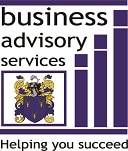If you operate in the highly competitive and fragile retail landscape you’ll need more than a basic grasp of accounting. You must know which financial metrics affect your business and how to measure and monitor them.
This article highlights four common financial metrics that every retailer should be reviewing every month. It also explains what they mean.
Cash Flow
Cash flow will often indicate how well a business is doing. Positive cash flow and healthy bank balances will support this. Erratic cash flow and significant fluctuations in bank balances may be a red flag that a business is facing problems.
Managing your cash flow is critical to your success and is an essential skill to be learned. Many retailers have significantly cash based businesses. Customers buy and pay for goods at the point of sale. Suppliers request payment soon afterwards.
 A liquidity ratio called “the current ratio” highlights your ability to repay short-term debts. It’s calculated by dividing your current assets (cash and bank, debtors, stock) by your current liabilities (creditors, wages, etc).
A liquidity ratio called “the current ratio” highlights your ability to repay short-term debts. It’s calculated by dividing your current assets (cash and bank, debtors, stock) by your current liabilities (creditors, wages, etc).
A ratio exceeding more than 1 indicates you are likely to have more readily available cash than you do debts.
Many retailers evidence strong trading periods with high sales volumes and good cash flow, followed by the opposite. Retailers with seasonal or cyclical sales (such as florists, retailers relying on Christmas trade, etc) will quite often experience significant fluctuations.
Regardless of a business’ sales performance and bank balance, fixed costs, such as rent and wages, will still need to be paid. For many operators, GST, payroll tax and income tax obligations will further strain cash flow.
Budgeting and forecasting will help you to predict the potential peaks and troughs in your cash flow.
Stock Turnover
For many retailers their stock (also called inventory) is a significant asset. Consequently, knowing how quickly you sell your stock (stock turnover) is vital. Lower gross profit margins are often signs that stock is not being sold quickly enough. High storage and warehousing costs, discounting and obsolescence drive down profit margins.
Stock turnover is measured in days. Divide your average stock values by your cost of goods sold and then multiply the figure by the days in your reporting period. A low figure is likely to indicate that you are selling your stock quickly. For even better results, perform the calculation for different products as stock turnover will differ across your product mix.

Gross Profit Margin
A gross profit margin highlights how much (profit) margin you earn on every dollar you make before deducting expenses. For example: A 40% gross profit margin means you earn $40 for every $100 you sell. The $40 contributes to paying your other expenses.
You calculate it by subtracting your cost of sales (typically, purchases) from your sales to give you gross profit. You then divide your gross profit by your sales.
Gross profit margins will vary for different products, business sectors and industries. Comparing your margins with other businesses in your industry (“bench-marking”) will provide useful insight to how well you are doing.

Regardless of whether you sell more or sell less, your gross profit margins shouldn’t vary too much. Paying more for your cost of sales and discounting your prices will adversely affect your gross profit margins.
A client recently advised us that they were frantically trying to increase their sales. Whilst we fully supported and applauded our client, we also advised her to ensure she also maintained her gross profit margins.
If you increase your revenue but your margins deteriorate your extra effort may not be compensated.
Net Profit Margins
Accountants love profit metrics. Earnings before interest and tax (EBIT), operating profit and net profit are some of the more common ones. Knowing what each one measures is vital before selecting one to monitor consistently.
For example: net profit measures how much income remains after expenses have been deducted. Divide net profit by sales to give you the figure. A 12% net profit margin gives you $12 profit for every $100 income you earn. The figure can be calculated before or after tax is deducted.
![]()

Your profit margins will deteriorate with increasing expenses or overheads. I recommend that you regularly analyse your main expenses. Determine whether they are required or can be trimmed a little to maintain your profit margins. We recently wrote an article that suggested putting business on diets to boost net profits.
The retail industry will remain highly competitive and margins will come under increasing pressure. To survive, retailers must understand their numbers and have a proficient standard of financial literacy.




2 Comments
SimonWilson
I agree, retailers should understand financial metrics and I would go even further and say almost anyone should know these things. It’s helpful to understand how the financial market works and if more of us would be more knowledgeable I think we would have more businesses that would turn a profit and not go bankrupt. Most people know what cash flow means but few know about stock turnover or gross profit margin. Thank you for explaining these things for anyone to understand. As a retailer myself, I know how important it is to fully grasp these terms and use them accordingly.
John McCain
To be honest I am one of those people who payed little attention to these things. I left it to my accountant to tell me. Now I will ask him to discuss these numbers when we meet.